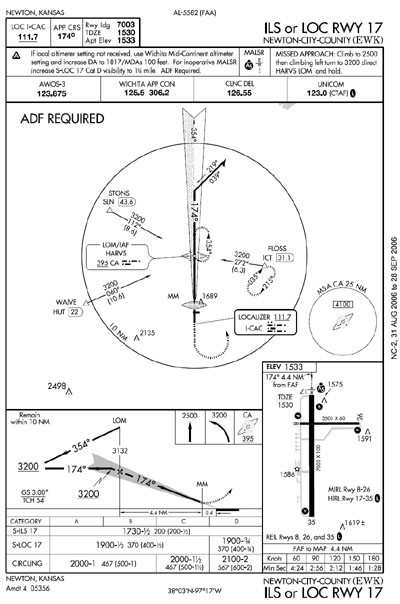Aero-Tips!
A good pilot is always learning -- how many times have you heard
this old standard throughout your flying career? There is no truer
statement in all of flying (well, with the possible exception of
"there are no old, bold pilots.")

Aero-News has called upon the expertise of Thomas P. Turner,
master CFI and all-around-good-guy, to bring our readers -- and us
-- daily tips to improve our skills as aviators. Some of them, you
may have heard before... but for each of us, there will also be
something we might never have considered before, or something that
didn't "stick" the way it should have the first time we memorized
it for the practical test.
Look for our daily Aero-Tips segments, coming each day to you
through the Aero-News Network.
Aero-Tips 09.26.06
In most cases Instrument Flight Rules (IFR) flight is done, at
least in the contiguous United States, under positive radar
control. If conditions are such that you need to fly a terminal
procedure ("approach") you'll receive radar vectors to align with
the final approach course.
Often approaches, including the increasingly common "T-style"
GPS approach, are designed so that you intercept an initial
approach fix (IAF) and proceed toward the airport, without having
to turn completely around. Sometimes your route to the IAF of
non-GPS approaches is such that you can continue on the approach
with a fairly shallow heading change.
If your route toward the IAF is not almost aligned with the next
leg of the approach, however, or if radar is inoperative or
unavailable to provide vectors, you'll have to fly a procedure
turn-a procedure to turn around and line up with the inbound
course.
Procedure turns are depicted with a barbed arrow on instrument
approach charts like the ILS 17 at Newton, KS (below). Unless
you're on radar vectors, you'll need to fly direct to the IAF,
HARVS, then turn outbound on the localizer on a heading of
354°. From here it's a matter of pilot technique for
maneuvering through a series of turns to end up approaching HARVS
from the north, aligned on the localizer inbound on a heading of
174°.

The approach chart illustrates a "classic" procedure turn (PT):
fly a minute outbound, turn to heading 039° and fly a minute,
turn around to heading 219° and intercept the localizer
inbound. The PT is effective, it's easy for the pilot to track
his/her progress, it's passenger-friendly and it's what you ought
to do to get through an FAA instrument checkride. But there may be
a quicker way.
Many pilots fly, instead of the classic PT, a "90-270" maneuver.
This military technique is also simple, and has the added advantage
of taking far less time than a classic PT. In this case, fly direct
to HARVS and intercept the localizer outbound (heading 354°).
Once established, make a 90° turn the right (to stay on the
same side of the localizer as the depicted PT, the "protected
side"). As soon as you're wings level, make a standard-rate left
turn of 270° -- this will put you very close to intercepting
the localizer. Make this 270° turn away from the airport (to
the left in this case), to give you more room to intercept the
localizer before reaching HARVS inbound on the approach.
Flown smoothly, the 90-270 procedure turn gets you much more
quickly aligned with the final approach course, and you and your
passengers on the ground all the sooner.
Aero-tip of the day: Practice the 90-270
procedure turn in visual conditions and under the hood a few times,
to see if the technique works for you.
 ANN's Daily Aero-Linx (04.16.24)
ANN's Daily Aero-Linx (04.16.24) Aero-News: Quote of the Day (04.16.24)
Aero-News: Quote of the Day (04.16.24) Airborne 04.10.24: SnF24!, A50 Heritage Reveal, HeliCycle!, Montaer MC-01
Airborne 04.10.24: SnF24!, A50 Heritage Reveal, HeliCycle!, Montaer MC-01 Airborne 04.12.24: SnF24!, G100UL Is Here, Holy Micro, Plane Tags
Airborne 04.12.24: SnF24!, G100UL Is Here, Holy Micro, Plane Tags Airborne-Flight Training 04.17.24: Feds Need Controllers, Spirit Delay, Redbird
Airborne-Flight Training 04.17.24: Feds Need Controllers, Spirit Delay, Redbird




